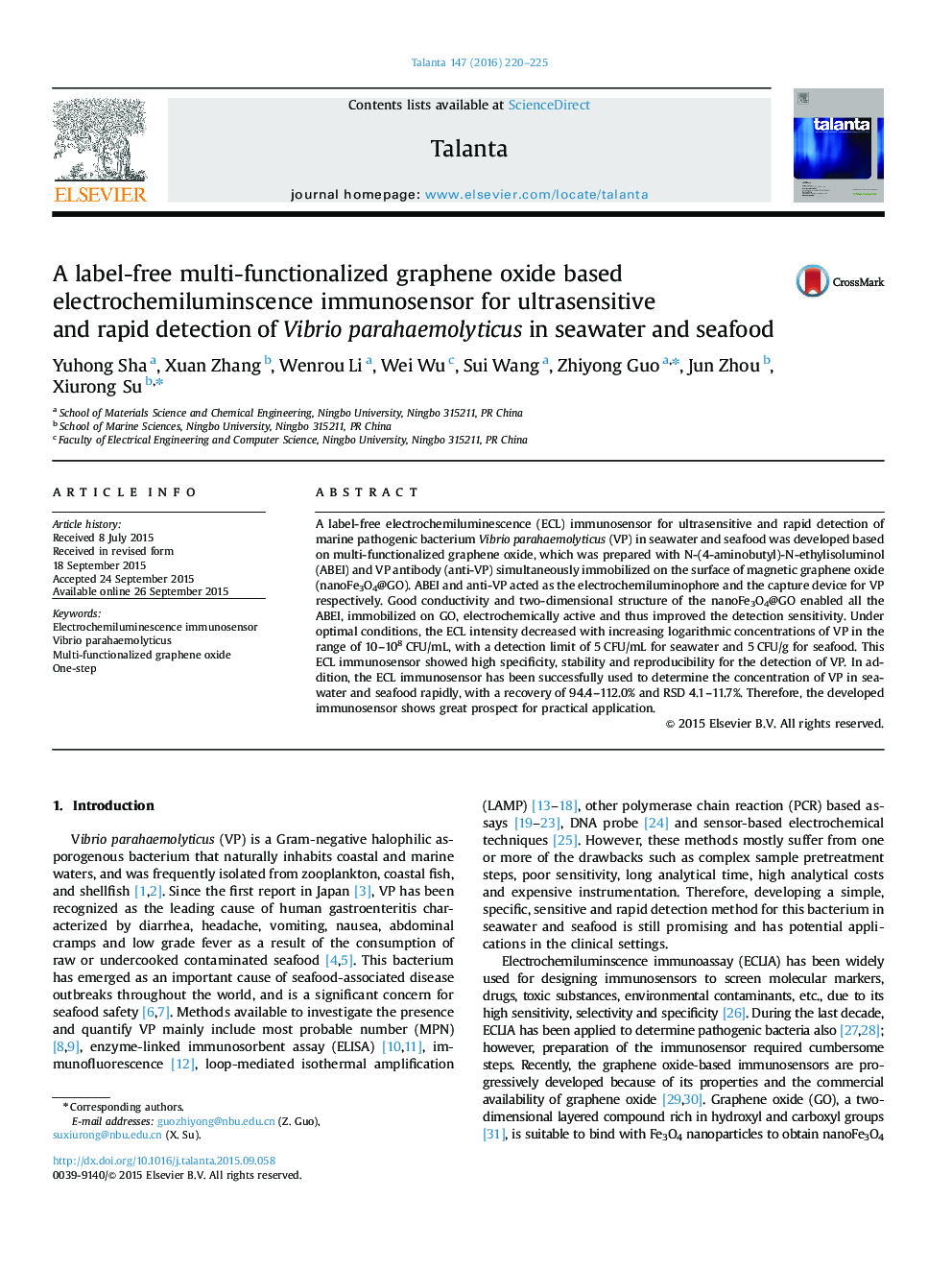| کد مقاله | کد نشریه | سال انتشار | مقاله انگلیسی | نسخه تمام متن |
|---|---|---|---|---|
| 1242747 | 1495788 | 2016 | 6 صفحه PDF | دانلود رایگان |

• One-step label-free ECL immunosensor was developed to detect VP.
• ECL immunosensor was constructed using multi-functionalized graphene oxide (GO).
• Anti-VP and ABEI were simultaneously immobilized on nanoFe3O4@GO.
• Multi-functionalized GO captured VP, emitted ECL signal and improved the sensitivity.
• VP was detected in the range from 10 to 108 CFU/mL, with a LOD of 5 CFU/mL.
A label-free electrochemiluminescence (ECL) immunosensor for ultrasensitive and rapid detection of marine pathogenic bacterium Vibrio parahaemolyticus (VP) in seawater and seafood was developed based on multi-functionalized graphene oxide, which was prepared with N-(4-aminobutyl)-N-ethylisoluminol (ABEI) and VP antibody (anti-VP) simultaneously immobilized on the surface of magnetic graphene oxide (nanoFe3O4@GO). ABEI and anti-VP acted as the electrochemiluminophore and the capture device for VP respectively. Good conductivity and two-dimensional structure of the nanoFe3O4@GO enabled all the ABEI, immobilized on GO, electrochemically active and thus improved the detection sensitivity. Under optimal conditions, the ECL intensity decreased with increasing logarithmic concentrations of VP in the range of 10–108 CFU/mL, with a detection limit of 5 CFU/mL for seawater and 5 CFU/g for seafood. This ECL immunosensor showed high specificity, stability and reproducibility for the detection of VP. In addition, the ECL immunosensor has been successfully used to determine the concentration of VP in seawater and seafood rapidly, with a recovery of 94.4–112.0% and RSD 4.1–11.7%. Therefore, the developed immunosensor shows great prospect for practical application.
Figure optionsDownload as PowerPoint slide
Journal: Talanta - Volume 147, 15 January 2016, Pages 220–225